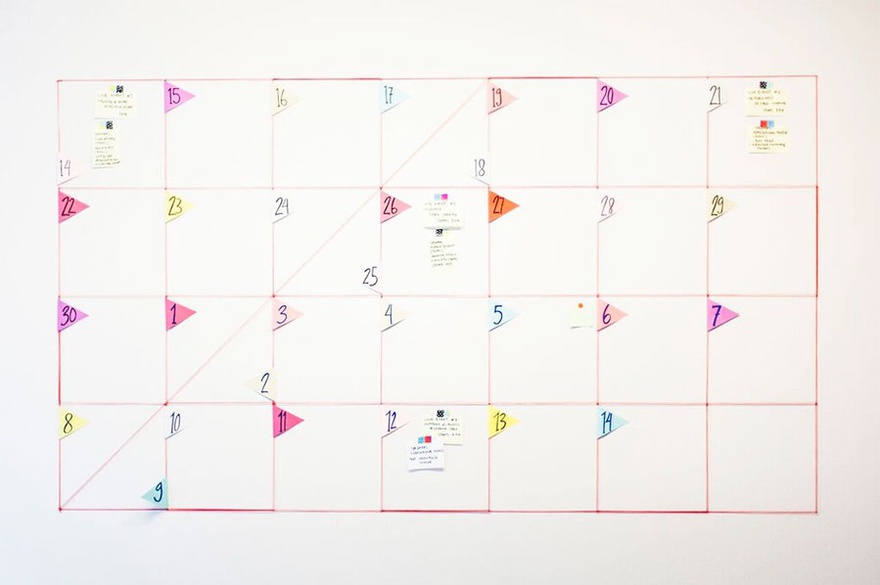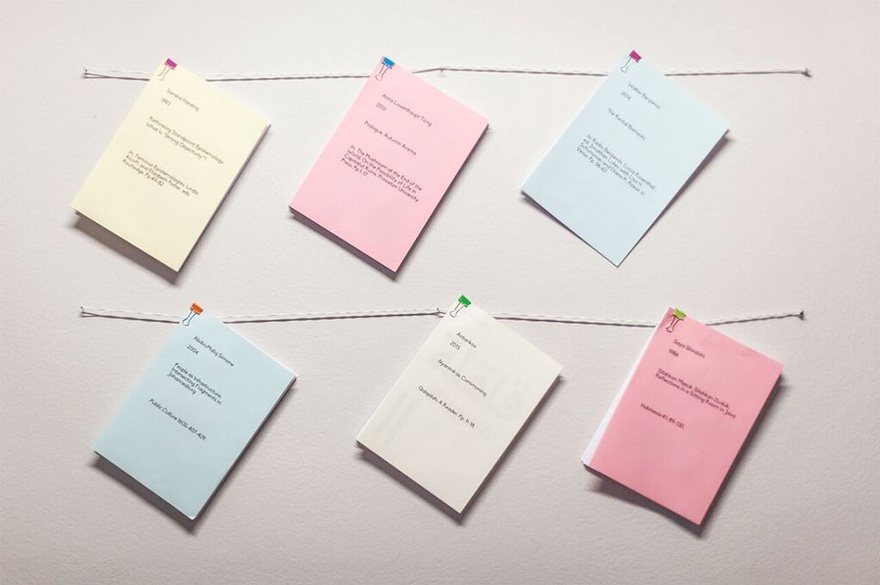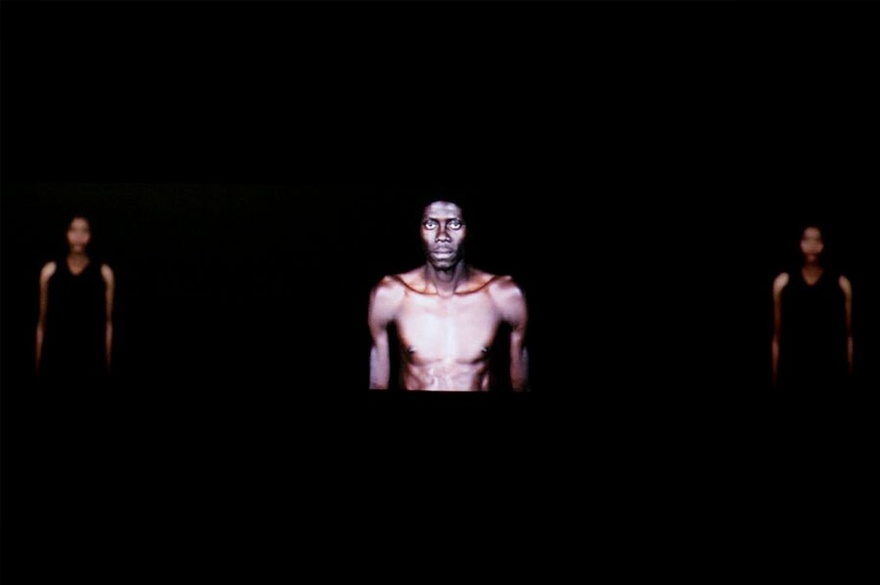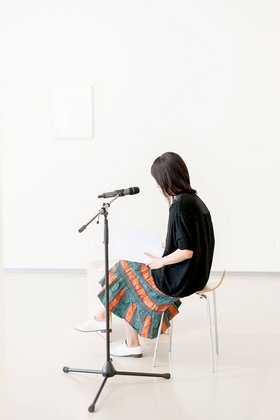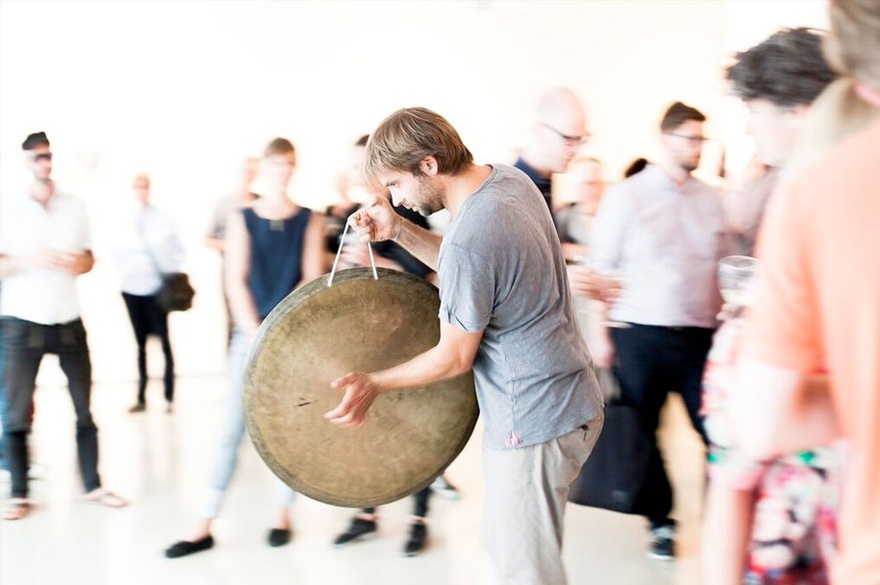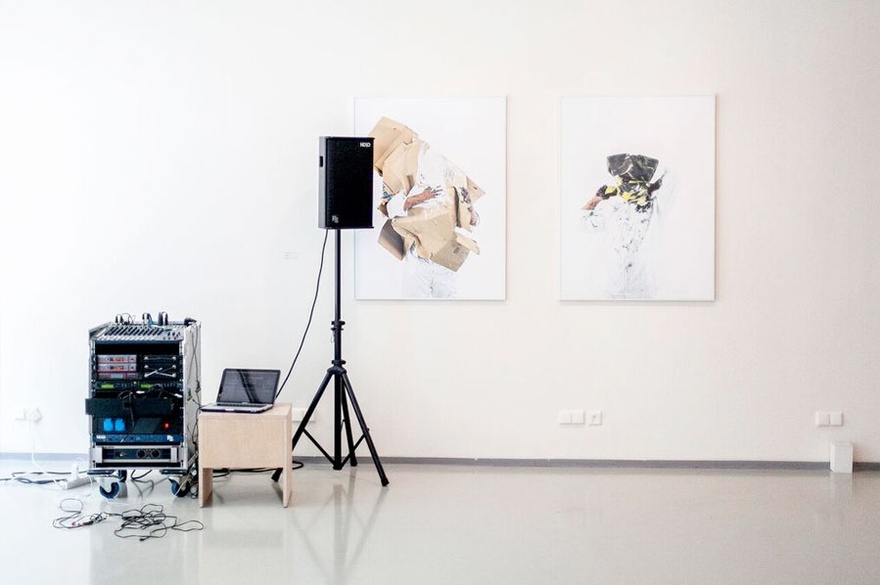Interviews
Enunciation Rather Than Representation
Alya Sebti in conversation with Göksu Kunak
In April 2016, curator Alya Sebti assumed the role of director at the renowned ifa Gallery in Berlin, despite what she calls 'her broken German'. Since 2015, Sebti has been working on various narrations in the space of ifa Gallery Berlin and Stuttgart, with exhibitions such as the 2015 exhibition Carrefour/Treffpunkt (Meeting Point) – The Marrakech Biennale and Beyond, which invited past participants of the Marrakech Biennial, of which Sebti was Artistic Director in 2014, to present both old and new works that reflected the position of Marrakech as cultural crossroads. In this interview, Sebti talks about the ideas that underpin her perspective and position as a curator in the international art world, including the notion of the subjective centre and her personal methods of un/re-doing words that are loaded with colonialist understandings. She also discusses the upcoming theme-based programme at ifa Gallery Berlin, where the white cube will be transformed into an active meeting point with a transregional approach.
Göksu Kunak: What are the urgencies for you when curating in a time of drones and selfies?
Alya Sebti: I like that you are speaking about selfies, because they refer to self-representation. Drones give an access to a limited representation and fragmented reality. Part of my curatorial research is a response to that. It's about subjectivity; enunciation rather than representation; the option of repositioning ourselves within a specific individual mapping instead of asserting one reality and representing the self only in that particular reality. Both my latest exhibitions, and the 2017 programme at ifa Gallery that I have been working on, have a lot to do with the idea of delinking that Walter Mignolo refers to, or the methodology of decolonization – acknowledging the power of subjectivity rather than asserting the representation.
GS: Last summer in 2015, you taught the class 'Curating / Translating The Polyphony of Voices' at the Salzburg International Summer Academy of Fine Arts. Could you explain what you mean by 'Translating the Polyphony of Voices'?
AS: As I said in an interview for the exhibition Carrefour / Treffpunkt, it's more about listening to the polyphony of voices rather than being a part of one unified voice. A polyphony of voices is related to subjectivities rather than one objective truth. It's about respecting the perspective of each individual and to not uniform or harmonize perspectives but take all the differences in. Other than that, I think we very often forget to really listen. We don't know how to create time for listening to the realities of each individual without pretending or trying to assert a truth. Polyphony of voice is a non-written form of transmitting knowledge and experience. It is giving importance to oral legacies and what is being communicated beyond the written contract based on institutional elements. Basically, translating the polyphony of voices is learning to listen and absorb different realities rather than believing in one objective truth.
GK: What are your curatorial methods when translating this polyphony of voices?
AS: Each project has different methodologies. However, they all include translation between the artist and the audience: translation, mediation, and moderation. This includes a constant conversation with the artist or with the audience to keep both perspectives in mind. When having the conversation with the artist, we think about how to translate the works for the audience.
In her essay 'Curare l'arte' (2002), Chiara Bertola analyses the figure of the curator. She takes the example of her work as a curator in conversation with the artist Marisa Merz and through that specific example shows that 'taking care of art' for the curator means contributing to the definition of an artwork and its translation to the public. Besides that, translating certain elements beyond spoken and written languages such as olfactory information or sound installation is crucial. Megumi Matsubara's work is a good example. The artist lives between Tokyo and to the old city, or Medina, in Fes. Since 2012, she has been living in a constant negotiation of languages. She made a piece, Undress (2015), for which she wrote poems and asked an expert to translate these poems into fragrances. In that way, the poems created an olfactory exhibition. Later, the audience who experienced the smells in the exhibition space was asked to translate the poems into images. That's another example of translation.
GK: According to you, what are the methods/tactics to re-narrate art history from different perspectives or undo-unlearn/redo-relearn post-colonialist approaches?
AS: The words that we are using at this moment such as 'enunciation' and 'perspective', or questions like 'where do we position ourselves?' or 'from where do we speak?' will also evolve according to whom we encounter. Let's also accept that our point of enunciation is mobile. Besides that, when we talk about colonial legacies in relation to contemporary society, the method of unlearning or translating it into a place like ifa Gallery through orality and providing more space for conversation or sound performances, gains importance, as does producing a discursive platform and working with various collaborations with independent initiatives or institutions.
Creating these capillaries and allowing for mobility rather than trying to frame an exhibition with one space is a constant process. There is no guarantee of success and I will continue to experiment as I have been doing in the past by being aware of the words that are used, and contemplating on how to (re)position ourselves and transform this idea of orality with a discursive platform and through performances. It is also about repositioning the artist in the middle: one artistic position in conversation with a public programme that creates a dialogue between different kinds of expressions – from performances and conversations, to screenings – by not only using the frame of art but also opening it up with discussions among a diversity of positions, from an artist to a sociologist, and a philosopher or a cook. These discussions help in rethinking sections and categorizations. In Graz, as a part of Steirischer Herbst, I gave a talk called 'West vs. Non-West, Centre vs. Periphery, Written Knowledge vs. Orality…VS BINARY SYSTEMS' that aimed to dig into the space between such binaries. I still don't have the perfect recipe, yet. These are some tools to move on step by step to keep cooking.
GK: In terms of words, should we forget them?
AS: There are two positions that I would like to look at and there is an opposition in between. When we are talking about unlearning and decoloniality, there is an emergency of finding new words that don't exist in our world yet. However, the trap we often end up in is that we don't dare to talk about the words that are in between. For instance, I posted the text 'Decolonial AestheSis: Colonial Wounds/Decolonial Healings' by Walter Mignolo and Rolando Vázquez on Facebook. The text talks about decolonial pride and taking power in people's hands. Because the word 'people of colour' appeared in the text, this post got immediate reactions to the wording. People are irritated by certain words, but because of the lack of new ones, their content becomes a taboo.
At the moment I feel we have to use words by contextualizing them. Another method is to use words that don't exist in one language but do in another. When we were working with KUNCI Collective for Radio KUNCI, for instance, we deconstructed the Indonesian word Numpang, which cannot be exactly translated. Numpang is a shared space and time for social interaction. What you and I are doing now is numpang, as we are sharing this moment with coffee. Another good example of embracing words that exist in another language and accepting the porosity of languages is when Eduard Glissant talks about creolization; maybe that's a tool as well. Rather than inventing new words, either we could use existing words by recontextualising them or we use existing words from different languages, analyzing them from a new perspective and bringing them into our language. In that way, we would be able to unlearn and create new positions.
GK: Have you ever been censored?
AS: I have never been censored and I am trying as much as I can to never unconsciously self-censor myself. It's a very difficult question that has a lot to do with your own projection. Meaning, it could also be the fact that you're self-censoring. In terms of unconscious self-censorship, I'm never sure if I'm critical enough. Maybe I do it in an unconscious way, even though I don't think so. Do you have that sometimes?
GK: I think I do, especially when I'm speaking in Turkish.
AS: I don't feel I have, and take, the same freedom of speech when I'm speaking darija, or Moroccan, in Morocco, but this is not an objective truth. It has to do with my own subjective feeling and projections within a specific constellation.
GK: Have you ever felt exoticised or othered as an internationally renowned female curator from Morocco, especially considering the fact that you are the director of a German institution?
AS: In 2015, before I became the director, there was a talk at ifa Gallery called 'Where are you speaking from?', quoting Foucault's 'd'oú parles-tu?'. It was also an answer to 'where do you come from?' and stating that we are the combination of all the people we have encountered, all the places we have been, and all the books we have read. This makes us say something particular in one moment, but through time we'll be speaking from a different place – it's a constant statement. My programme is theme-based rather than referring to geography. The participating artists are chosen not according to the places that they come from but from where they are speaking. Where are they living at the moment or where have they been working? For instance, during the preparation of Johannes Haile's exhibition at ifa Gallery, With Different Eyes, it was discussed whether and how it should be communicated that Halle was born in Ethiopia and then went to New York to study before coming to Germany in the 1960s. However, this is not an exhibition about 'an Ethiopian photographer who showed his work on Germany'. More than a foreign eye about a foreign country, the images depict the shared moments of a person with the people he encountered.
GK: In one interview you say: 'There is no global art, only subjective perspectives on arts. My wish is to get rid of the idea of one centre versus periphery, that we would listen more to the different centres that exist in the world.' Could you also talk about your idea of centre and periphery?
AS: How I perceive the centre is that there are as many centres as there are people. My centre is completely different than yours and visa versa. I'm speaking from my own individual cartography. If we look at this map, it started in Casablanca, then moved to Paris, Rome, back to Morocco, followed by Berlin, with various projects and encounters in between. Now, as we're both in this café, two different centres are located in Berlin. Because of our own experiences, although geographically we are at the same spot, our centres differ. That's the plurality of centres. Carrefour/Treffpunkt was contemplating on how to reveal and invent languages that would enable us to encounter each other in this way. It is possible for us to be very close to each other geographically, yet we still cannot connect because of not finding ways to communicate. Another problem is that we rely on words rather than listening to non-spoken languages. That's why we used sound or olfactory signals in the show, in order to encourage listening with your other senses: your nose, or eyes. I would like to stress that what I say is my subjective experiences. I'm not trying to assert any kind of truth.
GK: In relation to what you're saying we could mention Jose Esteban Munoz and Judith Butler proposing the method of disidentification or transidentification to deconstruct the encoded meaning of identity in relation to nation or gender.
AS: I have an accent in every language I speak. When I speak French, I have a weird accent that is a mix between Moroccan and Italian. Interestingly, when I speak in Italian, I have a German accent – a language that I don't even speak correctly. The languages that I use are not framed in any of these languages. The accent always puts you in the margins. It's not only about accepting the porosity between different languages, but also being aware that you are often positioned on the margin. This very specific position could be perceived as a weakness, because we don't speak the language perfectly, however the accent of the margin is extremely precious as it allows you to see different perspectives.
I think this whole idea of one single identity is completely wrong. Even for the people who are born in one place and have never left. I never use the word identity. If I do it's always to question or deconstruct it. Identity is an illusion. It's a jail. Unfortunately, there is this tendency to be put back into that jail, and it's our responsibility to get out of it all the time. Personally, I don't want to be identified as Moroccan, French or Italian. I'm not tied to any geography. Nevertheless, one of the traps that we should be aware of is that we shouldn't be completely against geography or identity as well. As a person who grew up in Morocco, a complete opposition to where I was born and saying 'I have nothing to do with that place' would be nonsense. When I left the country to study abroad I was 18. I have a strong connection, but it's not what defines me. What is crucial is constant repositioning of the self and renegotiating that position.
GK: Could you tell more about what you plan to do in ifa Gallery this year?
AS: I can talk mostly about the structure, which will completely change from March 2017 on. We will have a meeting point with a curated 'hearing and reading station' that will evolve according to the theme. It will be an experiment by coming together to discuss and create time and space to read and listen. An exhibition is the start of a conversation. It's a question that afterwards creates the space for such interrogations.
The theme 'UNTIE TO TIE, on Colonial Legacy and Contemporary Society', will be analyzed in four chapters. Each chapter will last two and a half months. Within each chapter various mediums from visual arts to performance or to conversations will be generated to create an encounter. It will be like a book, with a self-reflexive digital platform. But why are we talking about this specific theme? What does it mean today? I would like to stress that it's not about finding answers, but about asking collectively and listening to possible answers.
In the following three chapters, there will be one artistic position for each chapter with a public programme instead of group shows. The title will be more elaborated, but for now, the working title of the first chapter looks at the archipelagic thought, the second focuses on urban culture and colonial legacy, and the third will look at intersectional feminisms. Finally, from January 2018 to March 2018, the closing chapter will be a group show on riots and resistance curated by Natasha Ginwala.
The program is based on a transregional approach. I think in contemporary societies we are dealing with the colonial impact on thinking and hierarchical patterns. Colonial power is still present in our daily life. Consciously or not, we experience it.
Alya Sebti is director at ifa Gallery, Berlin. She has curated several exhibitions in Europe and North Africa and was the artistic director for the 5th edition of the Marrakech Biennale (2014). Her recently curated exhibitions include: Caverne: Hicham Berrada (Wentrup Gallery, Berlin, 2015), Carrefour / Treffpunkt (Institut für Auslandsbezihungen ifa-gallery Stuttgart, Berlin, 2015). Casablanca, black energy (Le Manège, Mons, European Capital of Culture 2015); Now eat my script with Mounira Al Solh (KW, Berlin, 2015); Equilibres / Augleisch with Hicham Berrada and Felix Kiessling (Wentrup Gallery, Berlin, 2014), Of Other Spaces (Public space Morocco/ Netherlands, 2013); You never left with Youssef Nabil solo show (Casablanca, 2011), Reza Aramesh /Shadi Ghadirian (Rabat, 2010). From 2012 to 2014, she created a cycle of online exhibitions and publications on contemporary art in Morocco, Algeria, and Tunisia with Arte East.
Co-editor of the book Pas de Deux following the residency programme she curated at Villa Romana (Florence, 2014), her latest publications include: 'A voice through Images' (essay for Gregor Hildebrandt's exhibition catalogue Sterne Streifen die Flute), Carrefour / Treffpunkt (catalog of the exhibition 2015), 'Biennale, from grounding to meeting spac'e (POSITION Social changes through Art in the Arab World, Akademie der Kunst, Germany 2014). She has written and lectured extensively on art and the public sphere at venues including: Thessaloniki Biennale (Greece), University of Addis Ababa (Ethiopia), KW (Germany), Institut für Auslandsbezihungen (Germany), NYU (Germany), Le Cube Art Center (Morocco), Kunstquartier Bethanien / Club Transmediale (Germany).
She is a board member of the International Biennale Association.
Pfordte, J. "We are who we meet". ifa Gallery Official Website, 2015, http://www.ifa.de/en/visual-arts/ifa-galleries/exhibitions/interview-with-alya-sebti-and-megumi-matsubara.html . Accessed, 12.10.2016

